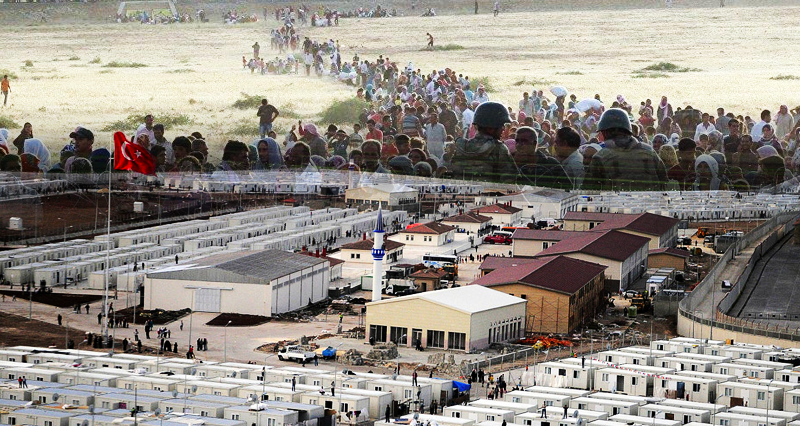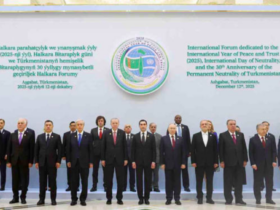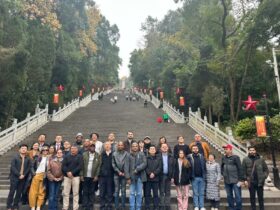By Cansu Yiğit
The footage showing the Afghan immigrants entering Turkey from the Turkish-Iranian border in a disorganized way, the US’ statement that it will accept the Afghans that have served them as immigrants via third-party countries, including Turkey, and the statements coming from EU countries demanding that Afghan immigrants should be stopped in Turkey have brought the disturbance related to illegal immigrants forward in Turkey’s agenda one more time. When the mayor of the city of Bolu declared that he would impose extra taxes on foreigners simultaneously, he fueled the debate even further. The latest events of a fight with Syrian refugees in Ankara’s neighborhood Altındağ, ending in death of a young guy and the residents of the neighborhood breaking the glass windows of shops owned by the Syrians after the fight have shown that this issue is a time bomb in Turkey.
However, this is not a new issue, it has been debated since 2011. Turkey’s open-door policy applied in Syria, the readmission agreement signed with the EU, the issues of immigrants in housing, their livelihood, employment and their participation in education, shortly their issues of adjustment. The issue is not unidimensional, nor has it a solution that is fast, exact and easy. We will try to bring out the issues in front of Turkey and their possible solutions at this stage beyond the current debate in general overview of Turkey’s immigration policy formed throughout history.
Concepts in Turkish Legislation
First, in order to prevent contradiction in terms, let us look at the definition of status corresponding to the concepts of refugee, asylum seeker and immigrant:
Migration and immigrant: Migration is defined as the situation where the individual leaves their country of residence for economic or political reasons and migrates to another country with the aim of settlement. The migrating person is called immigrant. However, there is a difference of meaning between the international literature and Turkish legislations. The settlement law defines “those who are Turkish descendants or connected to Turkish culture and who come to Turkey individually or collectively with the aim to settle” as immigrants. According to this definition, the Turks who came from the Balkan countries form the majority of the immigrants in Turkey.
Fugitive or illegal immigrants: This concept defines those who are not immigrants or asylum seekers, but who have entered Turkey illegally or the foreigners who were residing in Turkey when their visa or residence permit have expired. The lately debated Afghans who enter from the border illegally are within illegal immigrant category.
Refugees: The status given to foreigners who come to Turkey in order to seek refuge from European countries who are not Turkish descendants or connected to Turkish culture according to the regulation issued in 1994. With the law that entered into effect in 2013, the term “European countries” was changed to “countries who are members of the European Council and other countries to be determined by the President”. Refugees have identity cards and travel documents as well as residence permit for three years, permission to participate in education and work permit and they also have the right to benefit from health services and social services.
Asylum seekers or conditional refugees: This status is given to foreigners who are not in the immigrant or refugee status and who seek asylum in Turkey until they are placed in a third country. The government had to introduce this status for the population who came to Turkey from Iraq after 1991. With the law that entered into effect in 2013, conditional refugee replaced the term asylum seeker. Conditional refugees are eligible for a year of residence permit and they have the right to apply for work permit and travel documents and benefit from education, social aid and health services.
Temporary protection: Since 2011, the Syrian citizens who seek refuge in Turkey stay in Turkey with the temporary protection status. Legal legislation of the temporary protection status is based on the Law on Foreigners and International Protection (YUKK) that entered into effect in 2013 and the Regulation on Temporary Protection dated 2014:
“Temporary protection may be provided for foreigners who have been forced to leave their country, cannot return to the country that they have left, and have arrived at or crossed the borders of Turkey in a mass influx situation seeking immediate and temporary protection.”
The most important difference between temporary protection status and the refugee and conditional refugee status is that, while those two are within the context of “international protection”, temporary protection is subject to national regulations.
Those who are under temporary protection have the right to obtain identity card and work permit as well as benefiting from health and education services.
First years of the Republic
The first and most important immigration movement of the Republican era on the Turkish land, a territory that witnessed many migration waves through centuries, was without doubt the Turkish – Greek population exchange of 1923. It is known that about 384,000 people came to Turkey from Greece based on the agreement between 1922 and 1938.
The second wave of migration to Turkey comes from Macedonia in 1924 and 1936. The Emigration Agreement signed with Tito in 1953 leads the third wave of emigration from this country.
The waves of emigration from Bulgaria experienced in the first years of the Republic have continued until the 90s increasing and decreasing from time to time. It is estimated that 1.7 million people have migrated to Turkey from Bulgaria, Romania and Yugoslavia.
The first legislation related to immigration in Republican era is the establishment of the Ministry of Public Works and Housing. Then, the Settlement Law no 2510 was issued in November 8, 1923 in order to lay the legal grounds for immigration, The law allows the immigrants who are “Turkish descendants and connected to Turkish culture” to settle in Turkey under the status of “muhajir”. It disallows accepting “Those who are not connected to Turkish culture, spies, nomad Gypsies and those who were expelled from the country” as “muhajir”. It calls the immigrants who seek temporary refuge in Turkey due to any necessity as refugees, however, it does not provide the refugees with permanents settlement rights. The law says “Those who are not from the Turkish race are obliged to settle in any place to be determined by the Government and to stay in those areas unless the Government permits them to move”.
When we examine the articles of this law, it is clear that priority is given to the establishment of a homogeneous Turkish identity, thus aiming at assimilation. For example, the law says “People of those villages or families who are Turkish descendants but have forgotten Turkish or have neglected to speak the language are settled around the villages, towns and cities who are deeply tied to the Turkish culture.” In another article, it states that “The amount of foreigners settled in towns and cities cannot be more than ten percent of the total population and they are not allowed to establish separate neighborhoods”.
In summary: the immigrants who were already within the Turkish cultural sphere were immediately made citizens, they were allocated land and their adaptation to local population was aimed, while the refugees who were out of this sphere were cared to keep separate from the society. However, we must emphasize that it is clear that the meaning of Turkish race, descendant or culture is not an ethnical identity, but it means the vast land on which the Ottomans used to live on.
1951 Geneva Convention
The International Convention Relating to the Status of Refugees was signed within the United Nations (UN) in an attempt to find a solution to the refugee problem that arose as a result of the destruction of World War II. The convention had defined who would be defined as refugees as follows: “As a result of events occurring before 1 January 1951 and owing to well-founded fear of being persecuted for reasons of race, religion, nationality, membership of a particular social group or political opinion, an individual who is outside the country of his nationality and is unable or, owing to such fear, is unwilling to avail himself of the protection of that country; or who, not having a nationality and being outside the country of his former habitual residence as a result of such events, is unable or, owing to such fear, is unwilling to return to it.” The convention regulates the rights and obligations between the refugees and the host countries.
Even though Turkey has signed the Convention of Geneva in 1951, its approval took place as late as 1961. Therefore the definition of refugees in the Law of Settlement dated 1934 was changed. However, as Turkey approved the convention, it makes a geographical annotation to the convention declaring that the part “as a result of events occurring before 1 January 1951…” is construed and approved as “as a result of events occurring in Europe before 1 January 1951”.
The UN General Assembly has accepted the Additional Protocol to the International Convention Relating to the Status of Refugees (the New York Protocol) in 1967. The Protocol lifted the time limit on the statement, “as a result of the events occurring before 1 January 1951”. Turkey joined in on the Protocol with the decree of the Council of Ministers in 1968, however, it did not lift the geographical limits on the convention.
1991 Regulation on Asylum Seekers
The disorders experienced in the region such as the Iran – Iraq war between 1980 and 1988, the Gulf War of 1991 and occupation of Iraq in 2003 triggered emigration to Turkey, which became mass emigration occasionally. The Turkish legislation was not suitable to accept the waves of mass immigration especially like those from Iraq. Therefore, in order to fill this gap and regulate what needs to be done for mass asylum seeking, Turkey issued the “Regulation on Procedures and Principles related to Possible Population Movements and Aliens Arriving in Turkey either as Individuals or in Groups Wishing to Seek Asylum either from Turkey or Requesting Residence Permission in order to Seek Asylum From Another Country” or the Regulation on Asylum Seekers.
According to the regulation, it is principal to stop the mass waves of migration towards Turkish border at the border. However, if they are accepted by Turkey, the asylum seekers are settled in “camps that are as close as possible to the border”. When the war, clash or crisis that made them migrate ends, the asylum seekers are returned to their country, the residence permit of the asylum seekers who would like to be placed in a third country might be extended until their application is finalized. During their time in Turkey, asylum seekers are provided with the opportunities to participate in education, benefit from health services and to work under certain restrictions.
Since this regulation was prepared over the assumption that the mass immigration is temporary and the asylum seekers would return to their country or be placed in third countries, there were no policies regarding harmonization of this population with the Turkish population.
Law on foreigners and international protection
Turkey’s first law on refugees, the Law on Foreigners and International Protection (YUKK) entered into effect in 2013. The law puts a legal framework around the acceptance, stay and repatriation of refugees and asylum seekers and it establishes the Directorate General of Migration Management (GİGM) which is the first Turkish immigration entity for implementation and coordination of immigration policies. YUKK also guarantees that refugees and asylum seekers benefit from health, education and social services in Turkey and regulates the deportation decisions related to repatriation and objections to those.
The Regulation on Temporary Protection No 6883 based on YUKK determined who is to be placed under the scope of temporary protection. According to the Regulation on Temporary Protection, which currently applies to Syrians only, those who are included within the scope of this status cannot be repatriated. They are provided with work permits, their identity card is organized for them to be able to benefit from education and health services as well as other public services.
Main issues
We can see that the Turkish immigrant legislation, which is summarized above, is formed on assimilation basis for the Turkish descendants or the population, which is within the Turkish cultural sphere. To this end, until 1950s, the policies that are implemented are for harmonization and mingling with the society through land allocation and provision of Turkish citizenship for the population called “muhajirs” who migrated to Turkey. However, due to economic and political reasons, after 1990s, population which have various ethnicities and cultures migrate to Turkey from several countries as well as the neighboring countries. As well as not aiming assimilation against this mass immigration, the Turkish legislation does not have a comprehensive policy for integration (harmonization) of this population.
Because, all laws prepared until today, including YUKK are based on the assumption that the foreign immigration to Turkey would be temporary. However, at this point, we don’t know if over 3.5 million Syrians who are in Turkey for the last 10 year will return to their country even if the crisis in Syria is resolved tomorrow, or how many of them will.
According to the data of the Directorate General of Migration Management, as of 16 September 2020, Temporary Protection Identity Documents have been prepared for 3,618,918 Syrians. Out of these, 59,877 live at 7 centers of residence located in 5 cities and the remaining over 3 million Syrians live in various regions of Turkey with their own means. While the rights provided to Syrians are pretty generous on paper, everything changes in practice due to insufficient capacity and infrastructure.
It is known that Syrians work as seasonal farm workers, in manufacturing, construction and textile as low quality workers, most of which are uninsured and earn less than the minimum wage. The children and the youth have troubles accessing educational services due to economical and language problems. Another dimension of the crisis is that the wages in border cities where Syrians settle fall down, there are housing gaps, problems in social services and therefore there is a good amount of social disturbance which deeply affects the locals and leads to issues we are facing today.
Aside from the Syrian refugees, Turkey is also at the center of transit immigration because it is located on one of the five major global irregular immigration routes (because it connects the Middle East to the Mediterranean and Europe). The cost of the European Union’s policies aiming to keep the waves of immigration towards itself out of its borders on Turkey, which it sees as a buffer against immigration is increasing day by day.
Steps to be taken considering that Syrian refugees are Turkey’s most important issue in immigration
*The foreign policy moves that will facilitate repatriation of Syrian refugees must be accelerated. To this end, Turkey’s policy on Syria which prioritizes Syria’s territorial integrity must be put on a realistic ground by opening the channels of dialogue with Damascus. We must contribute to establishment of a political-economic structure where Syrians can peacefully live at home.
* A comprehensive and realistic program including education, health, work life and cultural fields for harmonization of Syrian refugees with the society must be prepared.
* A mechanism which will follow the Syrian refugees from their place of residence to their workplaces or their schools at each stage and solve any issues that might arise in these steps before they even occur must be established.
Considering Turkey is both a transit and potential immigration country
* Security measures that will mitigate irregular passage from the borders must be taken quickly.
* Diplomatic attempts must be made for common policies and cooperation related to border security and migration with potential sources of immigration and neighboring countries.
* We must immediately establish a Ministry of Migration.
* A sustainable policy on migration must be prepared.

















Leave a Reply